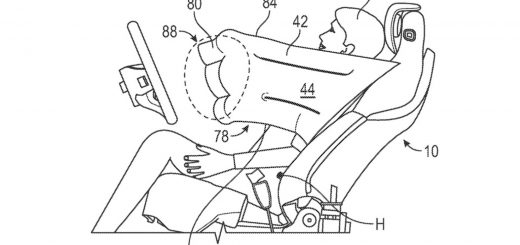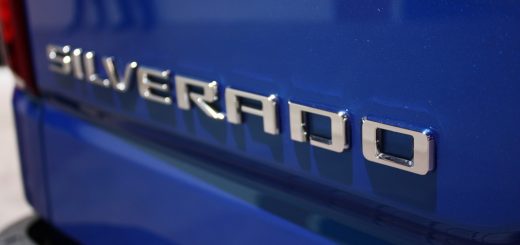GM has filed a patent application for an automobile interior sanitization system designed to sanitize surfaces within the automobile interior compartment. The system relates mainly to ride-share vehicles, such as the forthcoming Cruise Origin autonomous robo-taxi.
The new GM patent filing has been assigned application number US 2021/0402936 A1, and was filed with the United States Patent and Trademark Office (USPTO). The filing was first made on June 25th, 2020, and was recently published on December 30th, 2021. The patent is officially titled “Automobile Interior Sanitization” and lists Brooks S. Mann and Margarita M. Mann, both of Royal Oak, Michigan, as well as Holly C. Schwarzwalder and Nicholas R. Estes, both of Hazel Park, Michigan, as the inventors.
According to the patent listing, the system incorporates a “plurality of ultraviolet light arrays,” each of which includes ultraviolet light emitters that are then used to target specific areas of the cabin with ultraviolet light with a wavelength between 200 nanometers and 280 nanometers. The system also incorporates a controller that will activate the ultraviolet light system when proper operating conditions have been met and there are no passengers in the cabin. Additionally, the system will lock the doors prior to activating the ultraviolet light arrays.
The patent filing includes an image of two opposing bench seats, which appears to be the same cabin arrangement found in the up-and-coming Cruise Origin autonomous ride-sharing vehicle. Unveiled in January of 2020, the Cruise Origin is fully electric, and does not provide any accommodations for a human pilot. Rather, interior space is maximized for passengers, while two screens are placed in the roof to provide onboard passengers with important information pertaining to their trip.
As GM Authority covered previously, the GM-backed autonomous vehicle technology startup, Cruise, is looking to secure approval from the National Highway Traffic Safety Administration (NHTSA) to begin production of the new Origin robotaxi. Cruise has also filed to patent a new system designed to reduce visual media motion sickness, and a system to detect seat belt damage.
Back in March of 2020, GM Authority posed a hypothetical wherein autonomous vehicles could be used to help curb the spread of infectious diseases. The ultraviolet sanitization system patented here could help to strengthen that use case.
Subscribe to GM Authority for more Cruise news, GM patent news and around-the-clock GM news coverage.


















Comments
I guess if the poop on the floor or seat has been sterilized people won’t mind stepping or sitting in the sterilized vehicle?
WHAT A STUPID IDEA. There has been “ride sharing” vehicles around for more than 100 years. They used to be called Public Transportation Busses as well as Taxis and both have been manufactured by gm. So why is it now so important to have this virus killing mechanism in public transport vehicles?
Realizing that there is this new problem, Covid that does take lives, but there has always been influenza that has also taken lives as well as various other diseases that are as well deadly killers.
Ultraviolet light has been known of for hundreds of years and is also known to destroy viruses, so why is it only now that it is such an important and Patentable mechanism and only in public accessed vehicles?
What about a deodorizer?
I’m sure this information is available somewhere, but my guess is there will be a reporting system for passengers to report a vehicle that is in some way unsatisfactory, and Cruise will dispatch another vehicle. Vehicles may also have internal cameras viewable by central controllers to monitor vehicle condition(?).
If a rider damages a vehicle Cruise people will know who they are and charge them for the damage, so I don’t think Cruise will see much vandalism.
Who is going to want to ride in a vehicle where “Big Brother” is watching your every move and recording your every word?
People who already ride on public transportation with security systems I suppose.
CLC:
Minimizing graffiti and taging by bad actors will be challenging. Hoodies and sunglasses, even face masks will shield the bad actors from identification. A access card or fare card, smart phone app will have to be very tight to identify the user.
And 8f they can be identified will these drone providers really take the time and money yo investigate and prosecute.